Modern Portfolio Theory

Technical and fundamental analysis have been widely used to forecast or calculate the value of a security and influence investment decisions. Because of their popularity, it seems that these two methods dominate when it comes to choosing investments. However, there is another formidable approach to finding profitable securities: the modern portfolio theory. This blog is a part of a series written by our summer intern, Makenna. This series is based off excerpts from the well-known book, A Random Walk Down Wall Street by Burton Malkiel.
By calculating and comparing the risk of securities in your portfolio, you can capture profit by mitigating as much risk as possible. Risk can be used as a way to judge the profitability of securities rather than expected future cash flows and historical performance.
Using Risk to Value Investments
Before explaining how modern portfolio theory works, Malkiel begins with an assumption for the theory that rational investors want to minimize risk while maximizing returns. Next, he gives an in-depth example of how the modern portfolio theory works using an island resort and an umbrella shop. For this example, these two businesses are the only existing businesses on the island, and their performance varies with the weather. When it is sunny, the resort is successful and generates a 50 percent return while the umbrella shop loses 25 percent. On the other hand, during the rainy season, the umbrella shop makes a 50 percent return while the resort loses business and generates a 25 percent negative return. If one were to invest in either stock, he or she would find that the stock produces extremely variable returns- either an increase of 50 percent or a decrease of 25 percent. However, if one were to invest in both shops, therefore diversifying risk, then the return would be a steady 12.5 percent. The relationship between these two shops has a negative correlation because as business one is successful, the other is unsuccessful. Investing in both negatively correlated shops secures a lower level of risk, and therefore helps us reach our goal of minimizing risk while maximizing profit. Even though returns of each business are variable, we create predictability and lower risk by investing in both negatively correlated businesses.
Furthermore, we can use this knowledge to predict the opposite effect. Unlike the resort and the umbrella shop, let’s look at two closely related businesses: a dairy farm and an ice cream shop. The performance of these businesses is positively correlated, meaning that if the weather is cold and rainy and no one wants ice cream, the ice cream shop will also not purchase milk from the dairy farm. If one were to invest in both of these businesses and the weather becomes cold and rainy, then the investor would not only face a loss from the ice cream business, it would also lose money from the dairy farm. Clearly, it is important to have a diversified portfolio to protect against risk. Having multiple, negatively correlated stocks is the best way to build a portfolio that maximizes profit while minimizing risk. Moreover, if the level of correlation of different securities is completely negative, this theoretically eliminates risk.
Diversifying Your Portfolio
Using the modern portfolio theory, we can predict the returns of a portfolio by calculating the correlation between securities. This is applicable for all kinds of investing, and it does not focus on trying to beat the market by using common technical and fundamental analysis methods. For instance, rather than investing all of your money in a tech stock because fundamental analysis says it will have the high dividends and therefore high returns, or in a streaming service because technical analysis shows promising historical returns; modern portfolio theory would say to invest in a little bit of everything, so long as it is at least somewhat negatively correlated, to maximize returns while minimizing risk. Therefore, investing in broad-based index funds is almost certainly the best way to invest your money in the market to produce a desirable outcome.
Makenna Cooper
Summer Intern / Berry College Student
Share This Story, Choose Your Platform!
Wiser Wealth Management, Inc (“Wiser Wealth”) is a registered investment adviser with the U.S. Securities and Exchange Commission (SEC). As a registered investment adviser, Wiser Wealth and its employees are subject to various rules, filings, and requirements. You can visit the SEC’s website here to obtain further information on our firm or investment adviser’s registration.
Wiser Wealth’s website provides general information regarding our business along with access to additional investment related information, various financial calculators, and external / third party links. Material presented on this website is believed to be from reliable sources and is meant for informational purposes only. Wiser Wealth does not endorse or accept responsibility for the content of any third-party website and is not affiliated with any third-party website or social media page. Wiser Wealth does not expressly or implicitly adopt or endorse any of the expressions, opinions or content posted by third party websites or on social media pages. While Wiser Wealth uses reasonable efforts to obtain information from sources it believes to be reliable, we make no representation that the information or opinions contained in our publications are accurate, reliable, or complete.
To the extent that you utilize any financial calculators or links in our website, you acknowledge and understand that the information provided to you should not be construed as personal investment advice from Wiser Wealth or any of its investment professionals. Advice provided by Wiser Wealth is given only within the context of our contractual agreement with the client. Wiser Wealth does not offer legal, accounting or tax advice. Consult your own attorney, accountant, and other professionals for these services.





